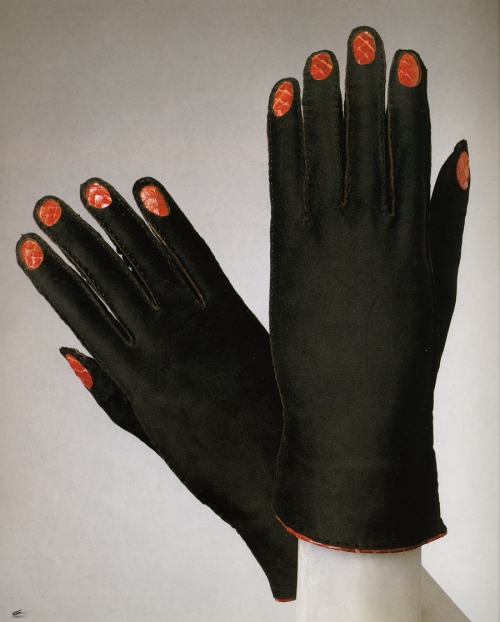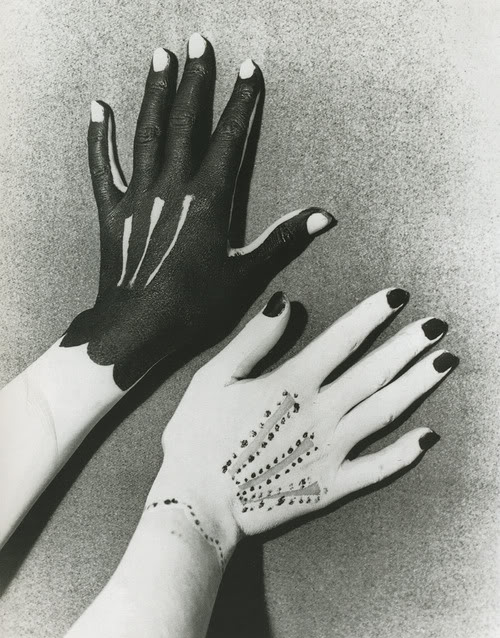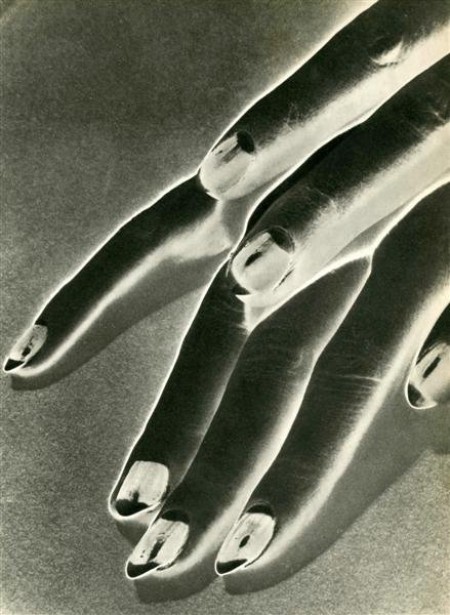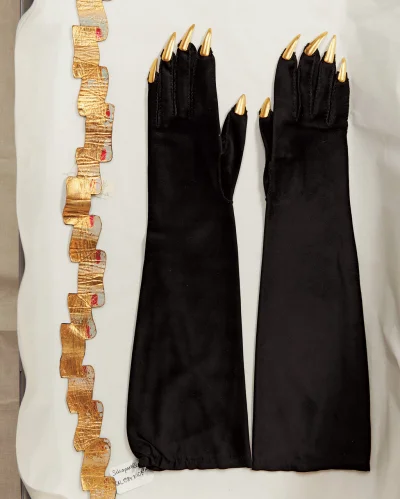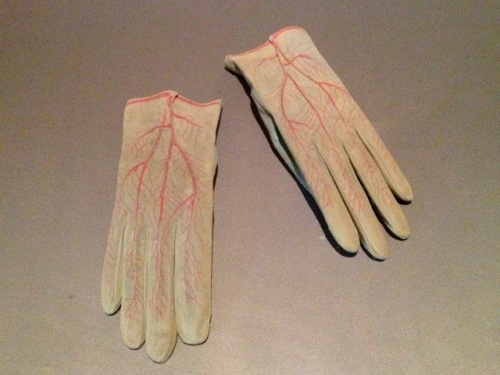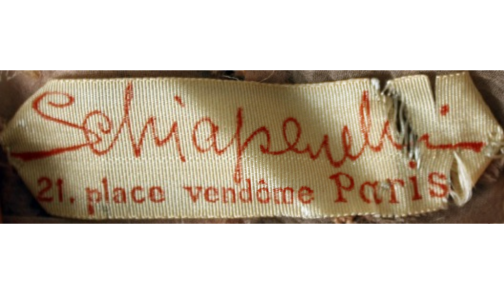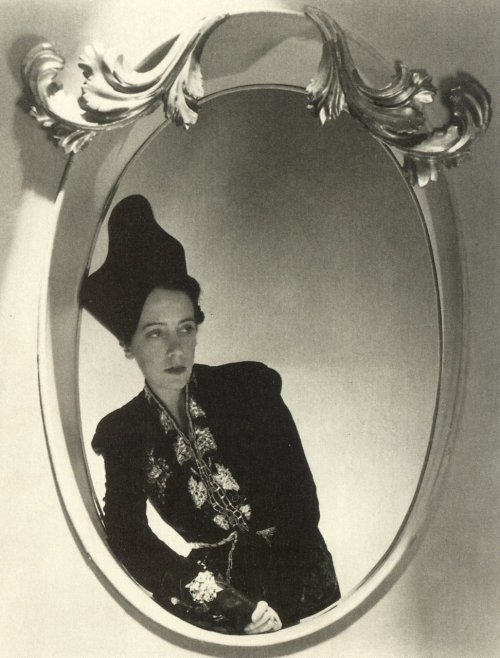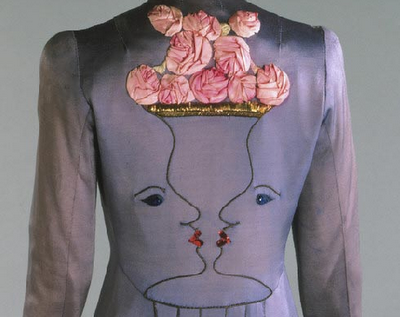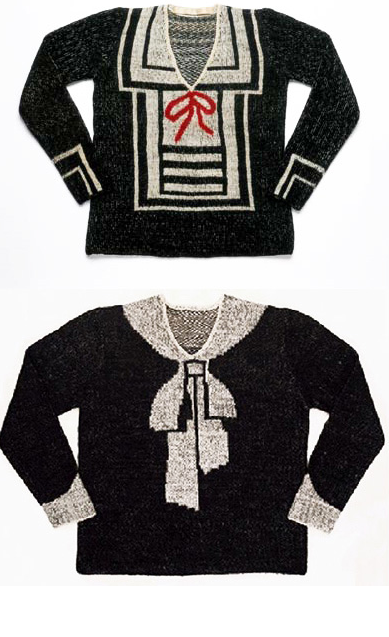As of late, I’ve been thinking more and more about 1920s and 1930s design, and about the fact that many of my favourite fashion designers were the ones to blur the lines between art and fashion. Wearable art is a term that is often thrown around when writing about these people, and it’s one of my favourite ways of thinking about well-designed clothing and creative styling.
Elsa Schiaparelli is well known for having been influenced by surrealist artists such as Salvador Dalí, Jean Cocteau and Man Ray, among others. But I would take it even further than to simply state influenced or inspired by – the more I read about her, the more I find these so-called inspirations would more aptly be described as collaborations. The reason these aren’t credited as collaborations I suspect in part has to do with gender, but it is most likely largely due to how much respect fashion vs. art is accorded. Fashion then (and now) is still seen as a lesser form of art, as a capitalist industry as opposed to one interested in symbolism, deconstruction or self-expression. While Man Ray and Dalí are both respected as some of the 20th century’s most important artistes, Schiaparelli remains a name known mostly in the realm of frivolity and fashion, associated with high society and the colour pink.
A perfect illustration of Schiaparelli’s artistic talents are some of the gloves she designed in the mid-1930s. In Schiaparelli’s collection for winter 1936–37, she produced suede gloves in both black and white, with red snakeskin fingernails to replicate human hands. The black gloves were worn with Surrealist suits with pockets that looked like miniature bureau drawers, designed in collaboration with Salvador Dalí (if you come across a photo of those suits, let me know! I’m dying to see what they look like).
These playful gloves were created around the same time as Picasso painted hands to look like gloves for a Man Ray photo. Rumour has it Schiaparelli was inspired to flip-flop the concept and create a pair of gloves to look like hands.
There’s something about these gold talon ones though that I love even more – isn’t there something about them that screams hard femme? “Look, admire, but I can fuck you up if you cross my boundaries?” Perhaps over seventy years later, I’m queering this a bit too much to my own fancy, though.
This was hardly the only time Schiaparelli incorporated hands into her designs: I’m absolutely enamored by this belt, from two years earlier.
The Met describes it as follows:
An ultimate expression of Schiaparelli’s interest in Surrealism, this belt was shown in the fall 1934 collection along with other pieces featuring the hand motif, such as a jacket, cape and handbag with hand-shaped fasteners. The hand was seen in many Surrealist artworks, such as those by Man Ray, and Schiaparelli used it in remarkable ways to accent her clothing designs. The wearer is literally embraced around the waist by the belt, an image echoed in the well-known jacket from the fall 1937 collection, featuring a woman with her golden sequined hair draped down one arm and her arm and hand wrapped across the body and waist, again embracing the wearer. The design was inspired by a drawing by Jean Cocteau for Schiaparelli.
Another artist who also happened to be photographed by Man Ray (Kiki de Montparnasse, Lee Miller, Schiap – which badass creative women of the 20s and 30s weren’t?) played with gloves around the very same time is Meret Oppenheim.
While these were created much later in her career, I find them no less interesting!
And since I am a fan of Man Ray’s portraits, here are some solarized portraits of Oppenheim for good measure.
Now I’m off to daydream more about
recommended reading:
- Elsa Schiaparelli: The Surreal Life by the Coincidental Dandy (September 30, 2012)
- Man Ray and Meret Oppenheim in Erotique Voilée byAlan Foljambe (May 7, 2010)
- Black & White Hands at Things that Quicken the Heart


